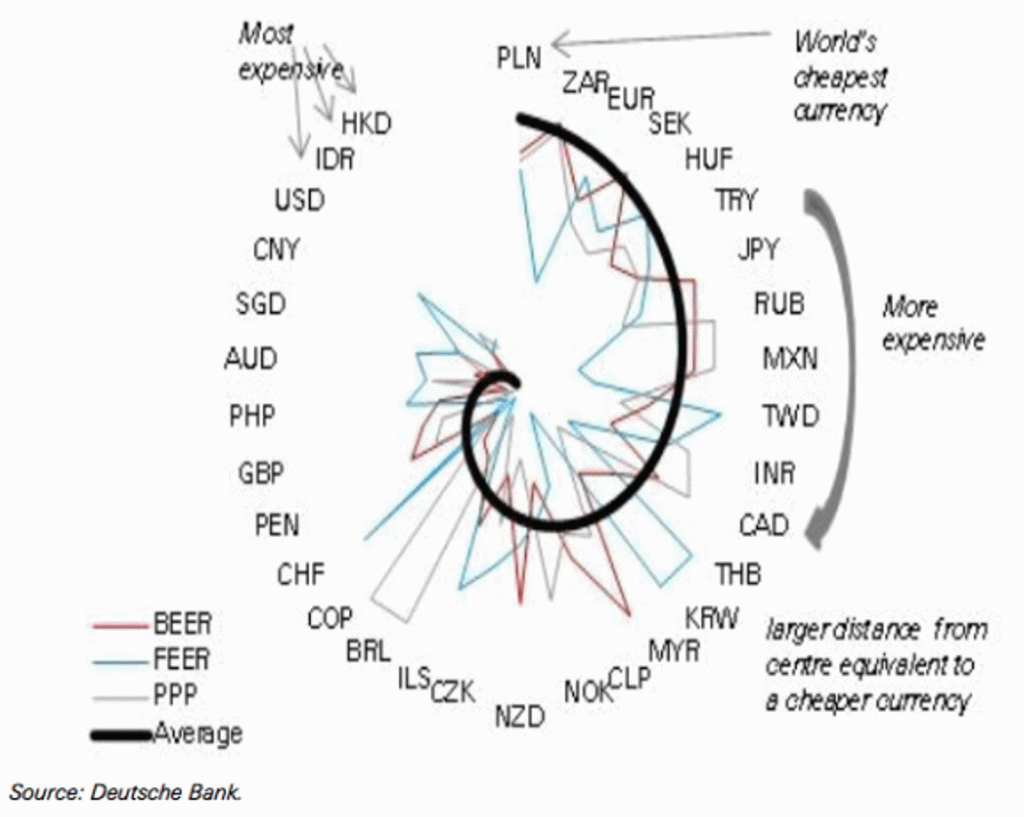Currency Competition – Race to the Bottom?
Often, when a country’s trade growth slows, a competitive devaluation is attempted. Undervaluing the currency is expected to lead to improving trade, which in turn leads to currency appreciation. The trouble is that all can play that game, it is called currency war. It always ends badly, at least for some.
This time may be different. Global trade growth has been weak since 2012, and it continues to worsen. So today, global GDP growth (which is also weak) relies much less on global trade growth than in the past. The inference is that under this scenario, currency devaluation will have a lesser effect than in the past.
This does not mean that competitive devaluations won’t be tried, and perhaps on a grander scale to get the desired effect. Currency risk to traders is therefore substantial. But Deutsche Bank has a valuable guide in the form of the swirlogram below.
This is a useful chart that should assist in understanding potential, future currency moves.
Note
The swirlogram is based upon three economic models (which may give pause as to just how meaningful the chart is). The models are:
- BEER – Behavioural equilibrium exchange rate
- FEER – Fundamental equilibrium exchange rate
- PPP – Purchasing power parity
I shan’t describe these models here, but there is plenty of information available online, although much is rather academic.

